Graphics, Throttling and Storage Performance



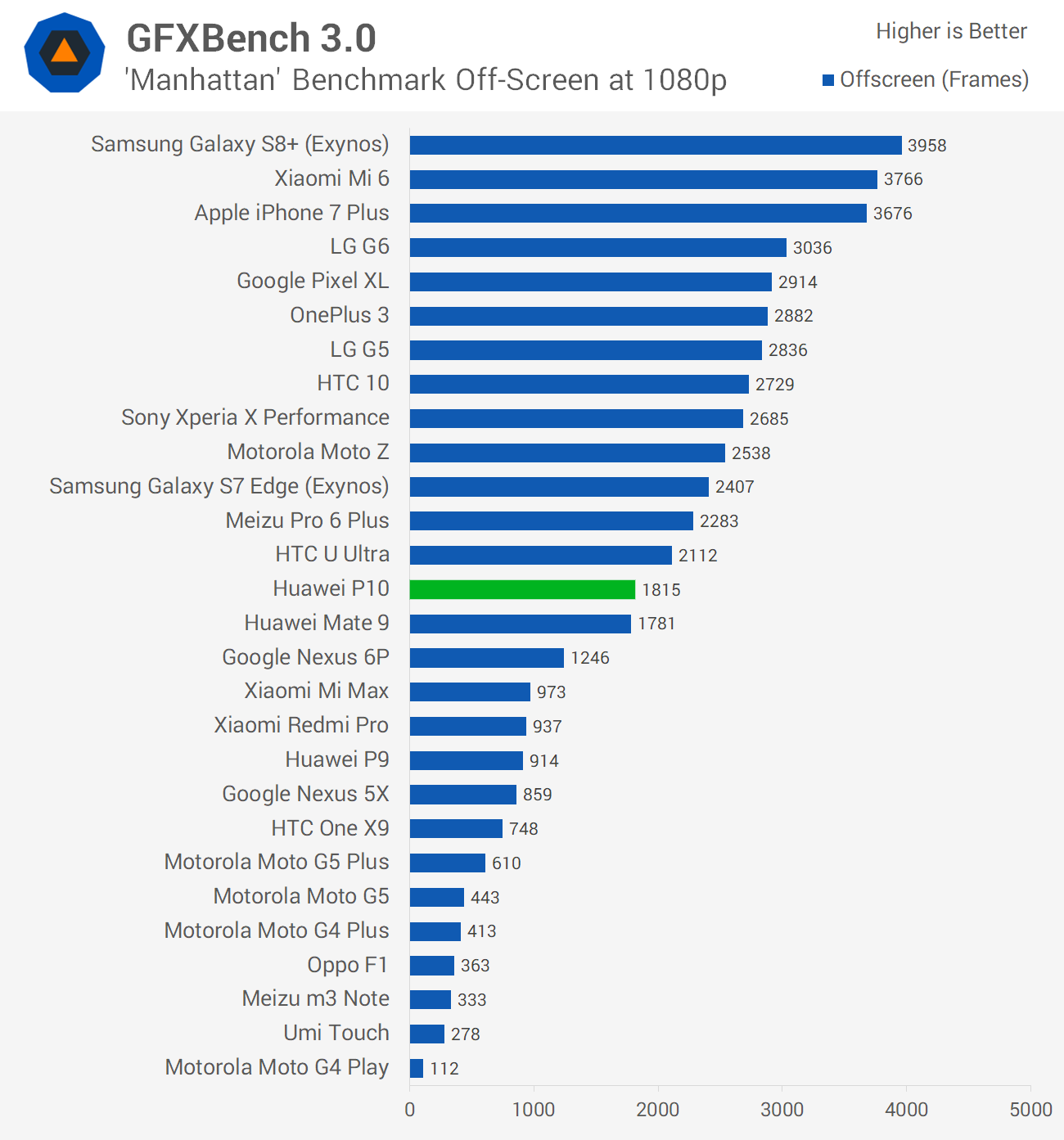
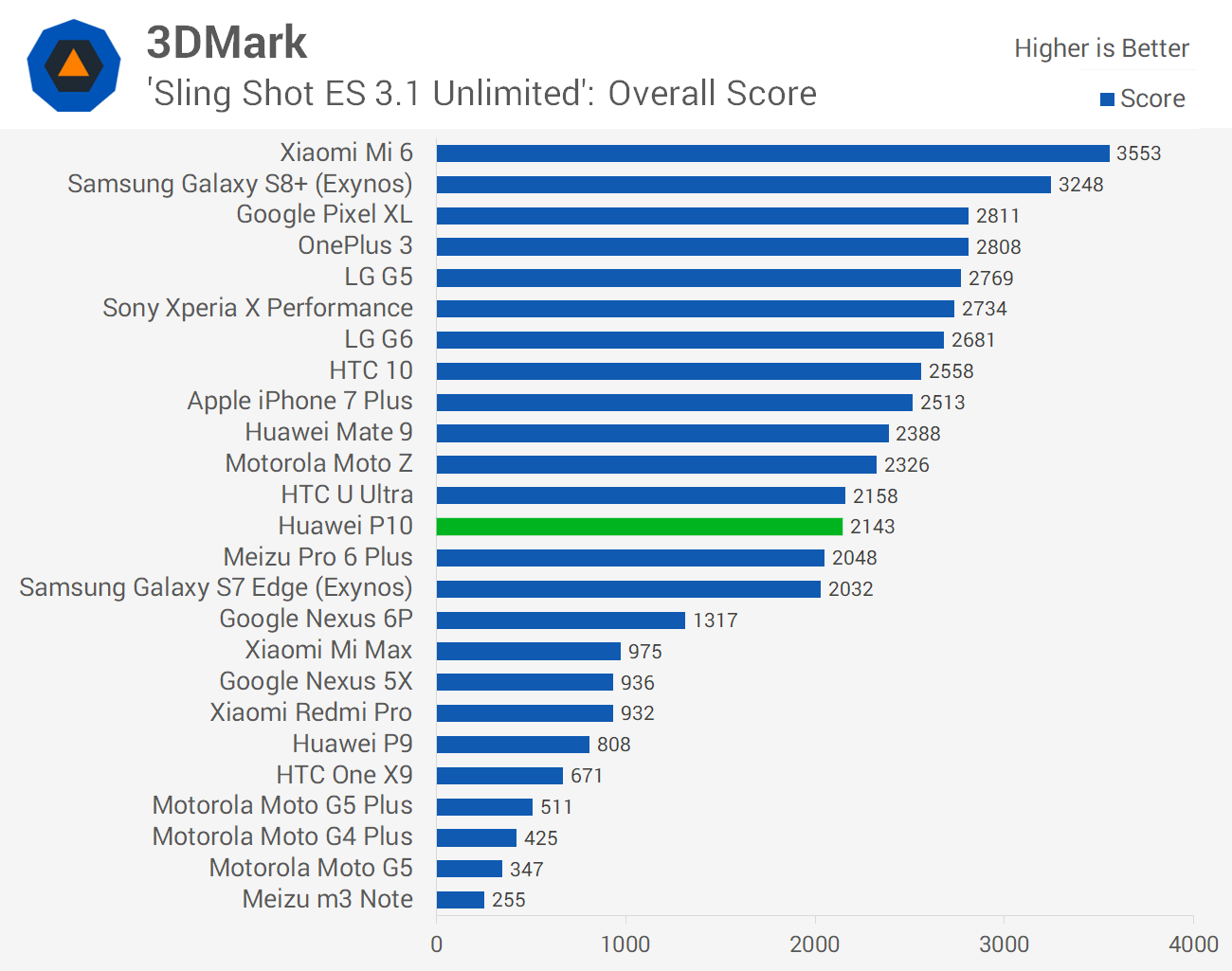
As I discussed in my review of the Huawei Mate 9, the Kirin 960 contains a fast GPU that can hold its own against some of today's most powerful SoCs at times. It's more than twice as fast than the GPU in the P9 in our benchmarks, and around 15 percent faster than the Snapdragon 821. It does fall behind the Snapdragon 835's GPU by 25 percent, and it also falls behind the Exynos 8895 by 13 percent on average.
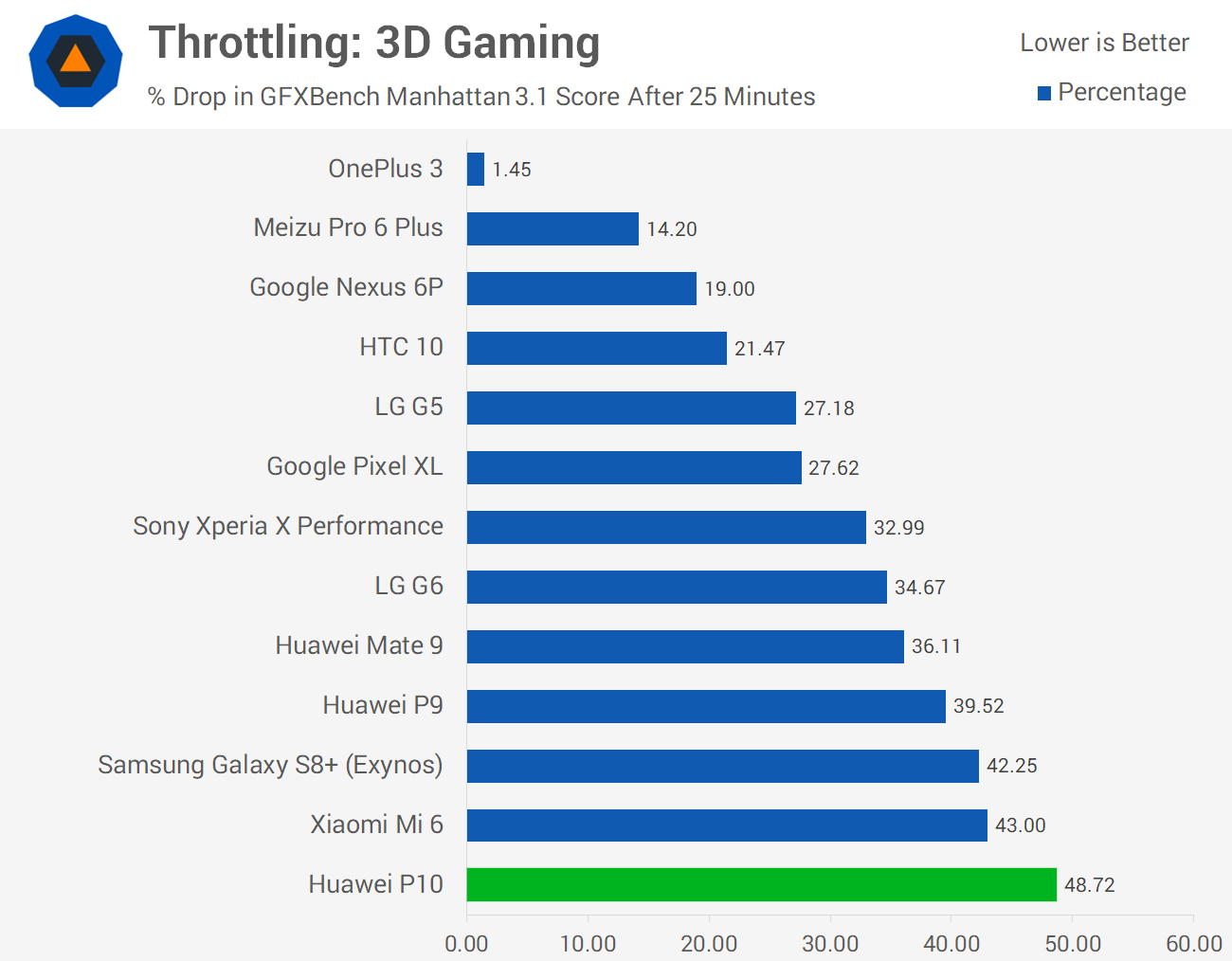
If you love SoCs throttling, you'll love the Huawei P10 and the Kirin 960. The P10 throttles the most of any smartphone I've tested so far, dropping its performance by a whopping 49 percent after 25 minutes of GFXBench's Manhattan 3.1 test. Most SoCs, including the Snapdragon 835 and the Exynos 8895, do throttle by over 40 percent, but the Kirin 960 struggles the most to maintain its peak performance.
The end result is that the Snapdragon 835 is more than 40 percent faster than the Kriin 960 under sustained workloads, a margin that would have been smaller had the Kirin 960 not throttled as heavily.
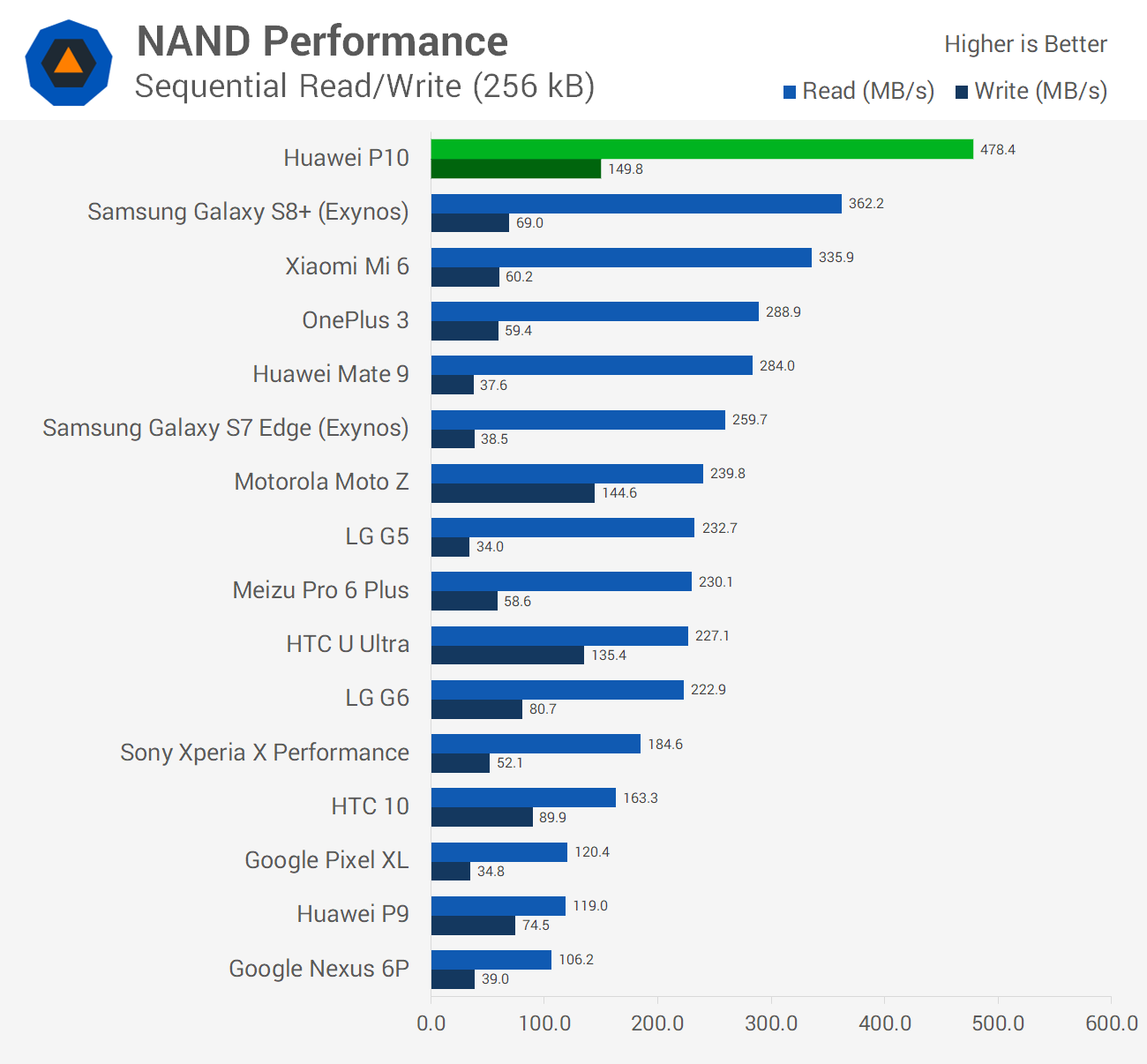
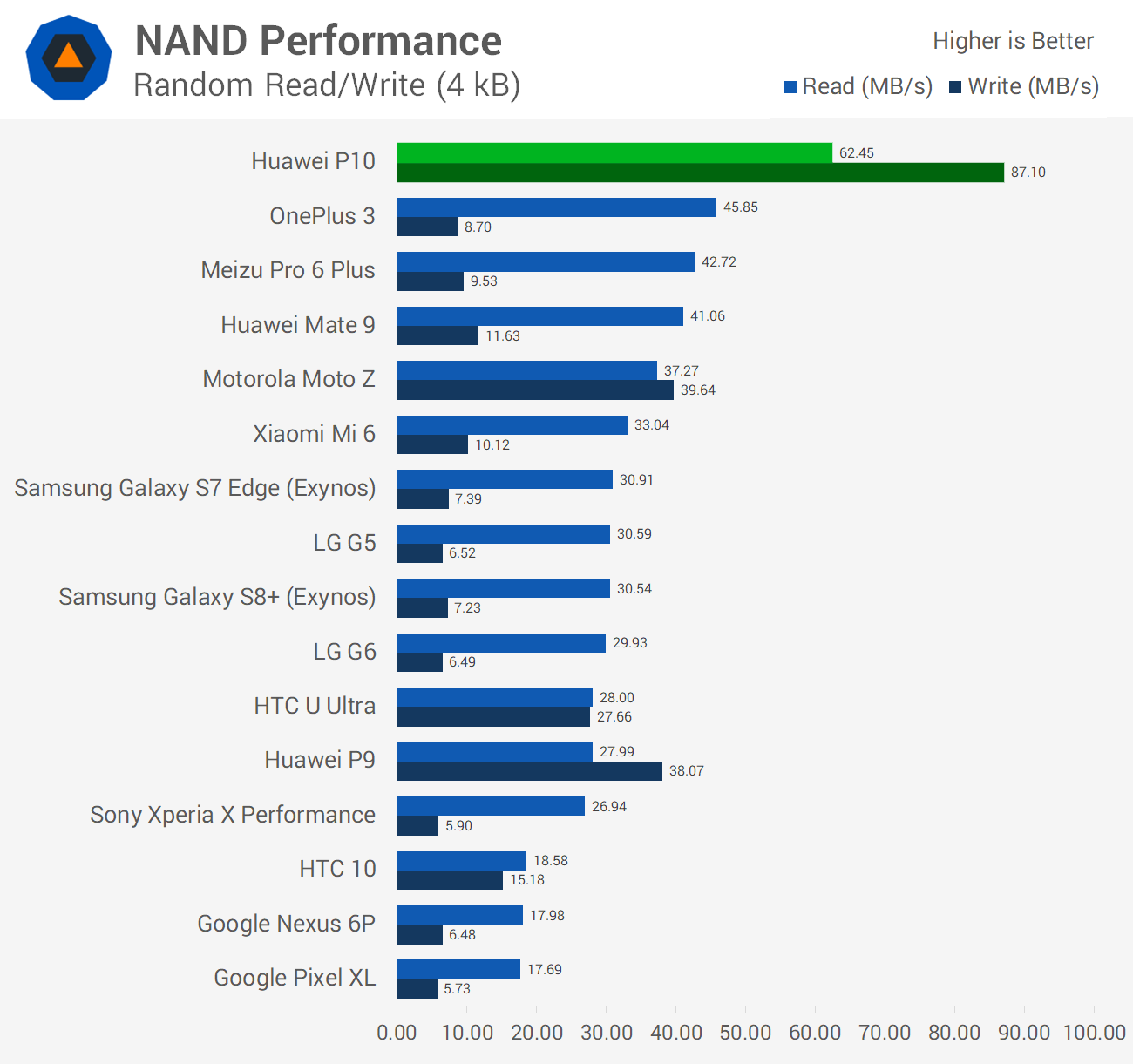
The Huawei P10 is a contentious device as far as storage performance is concerned, as there have been reports that some handsets come with a range of storage configurations. Some P10s come with ultra-fast UFS 2.1 NAND, while others use slower UFS 2.0 or eMMC 5.1 storage. It appears that our review unit, as supplied by Huawei, has the fastest UFS 2.1 storage, so the above results may not reflect the experience that everyone will receive.
However if you do get a UFS 2.1 unit, the storage performance is excellent, beating most top-end smartphones in our performance charts.
